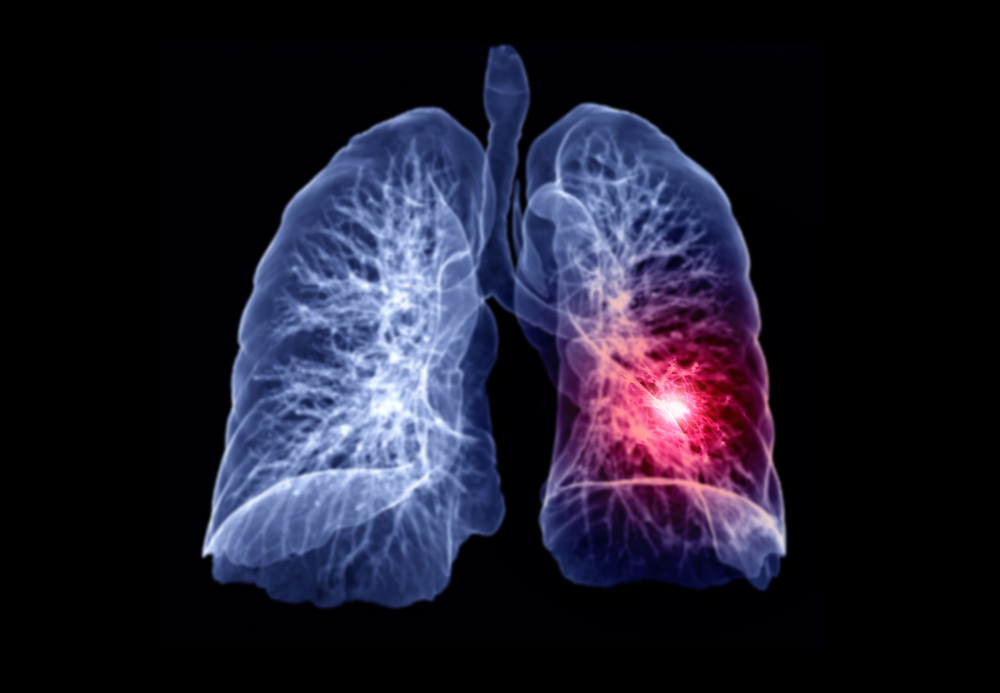Study Shows CT Screening Reduces Lung Cancer Deaths

Recent research published in JAMA Network Open confirms that CT lung cancer scanning reduces lung cancer deaths. A retrospective study examined the records of 312,382 patients from the SEER program diagnosed with non-small cell lung cancer who received CT lung scans between 2006 and 2016.
The study confirmed that patients with early-stage disease experience improved mortality. During the study period, deaths from lung cancer decreased by approximately 4% a year. Early-stage disease diagnosis rose from 26.5 percent to 31.2 percent, and late-stage diagnoses decreased from 70.8 to 66.1 percent.
This significant shift is meaningful for patients, families, and society. Median survival for early-stage lung cancer diagnoses was 57 months, while late-stage median survival was seven months.
The study detected a considerable increase in the number of patients with adenocarcinomas — up from 43% at the beginning of the study period to 59% ten years later. Adenocarcinomas are usually found on the lungs’ outer portions and are generally more slow-growing. Several earlier smaller-scale studies found similar trends of earlier diagnosis and more adenocarcinomas.
USPSTF Lung Cancer Screening Recommendations
In 2013, the U.S. Preventive Services Task Force (USPSTF) recommended annual screening for lung cancer by CT scan for at-risk persons. At that time, chest X-rays only detected lung cancer in 6.9% of those screened. However, CT scans identified cancer in 24.2% of those scanned.
The USPSTF updated its recommendations for lung cancer screening on March 9, 2021. This update lowered the recommended age to begin screenings from 55 to 50 and continue until age 80. The USPSTF updated the smoking history recommendation — recommending that persons with 20 pack-years over their lifetime be screened annually, down from the previous 30 pack-years recommendation. CT lung cancer screening is recommended for current smokers and those who have quit smoking in the last 15 years.
The recommended change in pack-years adds several categories of people at higher risk for lung cancer previously excluded from the screening recommendations. These new recommendations will increase the number of people eligible for screening — women who tend to smoke fewer cigarettes and Black men who face a higher risk of lung cancer than white men.
The Challenges
Only about 5% of those eligible for low dose CT lung cancer screenings adhere to the USPSTF recommendation. The Centers for Medicare and Medicaid Services (CMS) covers the cost of lung cancer screenings for patients, ages 55-77, who are asymptomatic. CMS specifies that coverage is limited to persons with a smoking history of 30 pack-years. Most private healthcare insurance also covers low-dose CT lung cancer screenings.
Some of the reasons given for the low screening rate include:
- Scheduling/must be ordered by patient’s physician
- Potential cost of follow-up testing
- Worry about false alarms
- Fear of diagnosis and the potential cost of treatment
- Denial of the risk of smoking/would rather not know
- Lack of knowledge that the lung cancer screening program exists
A recent study published in Chest suggests that a centralized lung cancer screening program, similar to a mammography screening center, dramatically improved compliance. Allocation of available resources is critical to increasing adherence rates for low-dose CT scans for lung cancer screening.